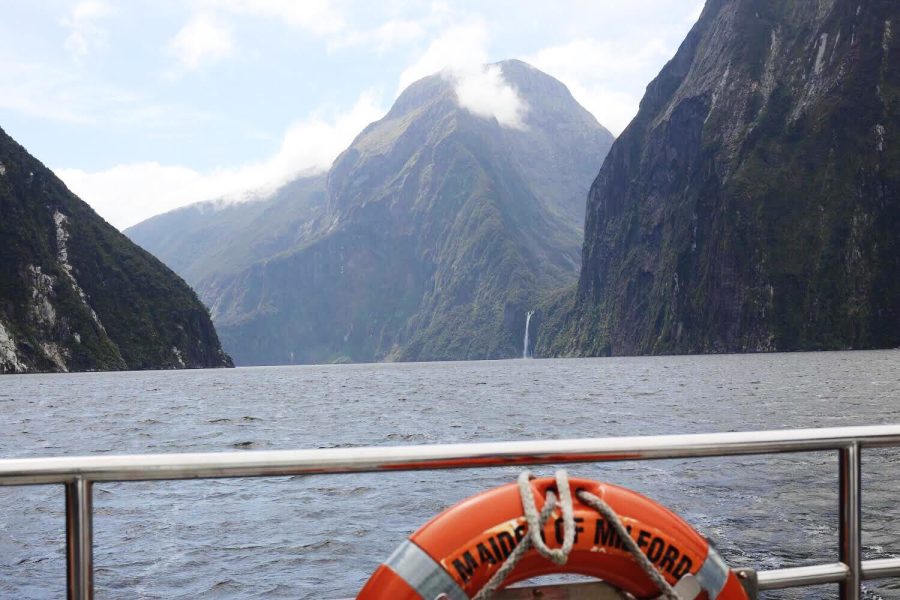Study Abroad in New Zealand
January 29, 2019
Dipping my water bottle into the clear stream, it occurred to me how new and extraordinary this experience is for someone who previously believed Deer Park to be fresh. Flowing untouched from the mountains in Fiordland National Park in New Zealand, this stream flows straight from the peaks of the mountains into the mouths of the New Zealanders. My guide explained how nature gradually purifies its own water through a specific cycle of rain, the accumulation of snowand finally avalanches to bring back clean water to streams and rivers. As he was speaking about these natural phenomena, I realized the significant gap that stands between myself and the environment.
Within the United States, drinking water undergoes purification, filtration and disinfection before being marketed and consumed. While most people rarely think about this process before each drink of water, in actuality there is something unnatural in the way we drink our water and eat our food (of course I am entirely for filtering water and am extremely grateful I have access to clean water, I am merely accentuating a particular oddity within the modern consumption of water). Up until the Industrial Revolution and arguably until the mid 20th century, people held a close relationship with not only their food and drink, but also with the land and wildlife. Due to mass production, food and agricultural familiarity continues to fade among American consumers. However, within New Zealand, natives know their food and producedue to the accessible farmers markets.
I spent this past semester on the South Island in New Zealand. This corner of the world, New Zealand holds some of the world most majestic scenery and environmentally conscientious people. Since New Zealand has a strong outdoors culture, the natives tend to their land attentively and meticulously. I have yet to meet a New Zealander that fails to at least properly sort his or her trash, buy local produce, or use sustainable hygienic products (the majority of natives take many more precautions). Throughout my months in New Zealand and neighboring countries, I swam in the Great Barrier Reef, attended a Hindu ritual ceremony in Bali, kayaked the Sydney Harbor, took the bullet train in Japan and walked on the Great Wall of China. However, the active mentality among New Zealanders to create a relationship with their land, food and farmers remains as one of the most astounding experiences to witness.











